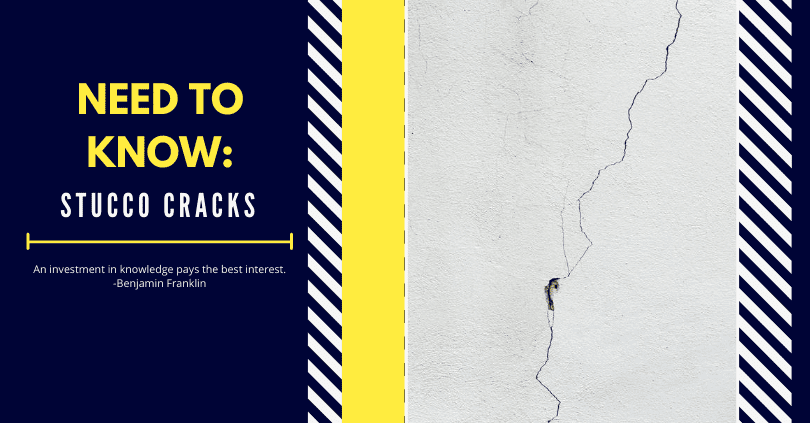STUCCO CRACKS
There is an old saying I have heard many times, “There are two types of stucco houses, one that is cracked and one that is going to.” Concerns about stucco cracking are some of the most asked questions during a home inspection. Like most cement-based products stucco cracking is inevitable.
There are many reasons for stucco cracking: expansion, stress, and craftsmanship are a few examples. However, there are certain patterns that can help identify what caused the particular cracking on a home. Below are some of the different types of cracks and information about them.
Hairline Cracks:
It is normal for the plaster to crack from movement and stress, especially in a new home. Construction materials drying, vibrations, and other factors can play a significant role in this process. Hairline cracks are typically around a 1/16 of an inch wide or smaller.
Foam Trim Cracking:
A lot of cracks on the foam trim that is used on stucco houses appear quite often where two pieces of trim meet. The cause is usually because a mesh tape was not used on the seam connecting them. If installed like this, it will likely crack over time due to shrinkage, expansion, and contractions that are brought on by the elements.
Spider Cracking:
This type of cracking is basically a sign that the base coat did not cure properly. This is caused by either drying too quickly, too much water in the mix, an incorrect mix, or the product applied when it was too cold or too hot the day.
Wall Patterns:
When there are defining vertical and/or horizontal cracking occurring throughout the wall, then more than likely it is caused by the lath. The lath (the wire specifically) was not nailed or stapled off properly, which is a more serious kind of cracking. Because the wire is essentially loose in some spots, then it will actually have a higher potential for forming even more cracks as time goes on. To correct the problem, the stucco must be removed and the lath has to be nailed off or replaced.
Step Cracking:
Sometimes you will see an angle-typed pattern, like steps, from the top corner of the home going down diagonally, signifying some other type of issue. These patterns are usually from the home settling. Some are more serious than others but a good rule of thumb is to look at the size and depth of the crack. If it is more than 1/8 of an inch wide, then it should be a bit higher on your priority list than smaller ones.
Maintenance Tip:
For the minor typical stucco cracking on most homes it is recommended to seal cracks with a caulking designed for cement-based components and applying paint on top of that. This will help keep moisture from intruding and causing unnecessary damage to the home.
However, it is hard to match the color of stucco exactly because it is porous and the color matching software used will pick up on the “shadowing effects” of the uneven surface. Keep this in mind if you are planning on painting and need to have your stucco color matched.

Hope this helps! Please feel free to call or email any questions:
office@keltinginspections.com
941-655-8888
Ask about our Environmental inspection package deals saving clients hundreds!








